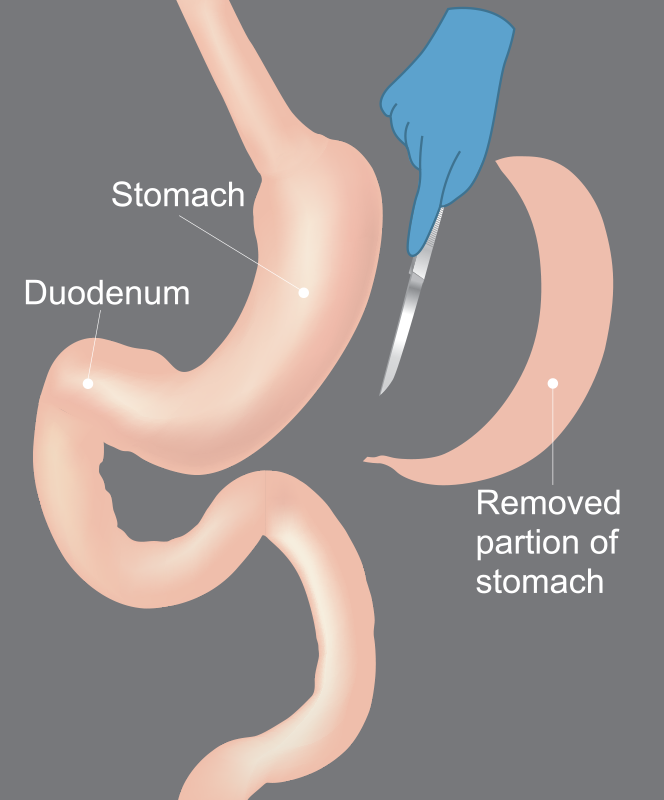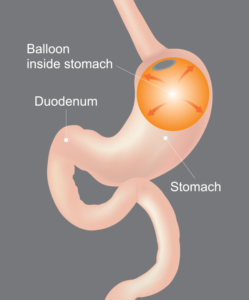See Which Weightloss Procedure is Best For You
Learn more about your weightloss options available. We’re ready to see you join our success stories!


Performed by the Top Bariatric Doctors in New York & Surrounding Areas
What is the Gastric Sleeve Procedure?
The gastric sleeve surgery can help patients lose large amounts of weight by surgically removing a significant portion of the stomach. A long narrow vertical pouch (about 2-3 oz) is created by stapling off and removing 85% of the stomach. This procedure is a purely restrictive procedure. A key benefit of this procedure is the decrease of the secretion of the hormone ghrelin which stimulates the appetite.
Gastric Sleeve Surgery Process
- The surgeon creates a small stomach “sleeve” using a stapling device; the rest of the stomach is removed
- This procedure induces weight loss in part by restricting the amount of food (and therefore calories) that can be eaten without bypassing the intestines
- Weight loss and improvement in parameters of metabolic syndrome are connected with the resection of the stomach and subsequent neurohormonal changes.

The most popular weight loss procedure chosen today!
Over 60% of type II diabetes is resolved
People lose on average 50-60% of excess weight
60% of people resolved their sleep apnea
Hypertension is improved or resolved in many patients.
With the VSG there is no foreign body to break, slip, or erode.
Works for patients that otherwise do not qualify for gastric bypass
Shorter Hospital Stays, Shorter Recovery
The majority of weight loss sleeve gastrectomies performed today use a minimally invasive laparoscopic technique. The entire procedure is done through a small incision in your abdomen. Our surgeons specialize in this method because it results in shorter hospital stays, faster recoveries, smaller scars, and less pain than open surgical procedures.
Disadvantages of Gastric Sleeve
After the gastric sleeve procedure, leaks and other complications related to stomach stapling may occur. This procedure has potentially slower weight loss than the gastric bypass procedure.
What is the Gastric Bypass Procedure?
The gastric bypass surgery, also called the Roux-en-Y gastric bypass surgery, is the most commonly-performed weight loss surgery in the United States. Because gastric bypass is the oldest and most popular bariatric surgery procedure in the United States, it is often referred to as the “gold standard” – and recent innovations have made gastric bypass surgery even safer than ever before.
Gastric bypass surgery limits your food intake and also restricts the amount of calories/nutrients the body absorbs. It has an immediate effect on the hormones that control insulin secretion and other metabolic responses. In fact, recent studies have found that the gastric bypass surgery works better than medication for type 2 diabetes.
Gastric Bypass Surgery Process
- The Roux-en-Y gastric bypass entails creating a small stomach pouch to restrict food intake and bypassing a portion of the small intestine to limit the absorption of calories.
- Next, a Y-shaped section of the small intestine is attached to the pouch to allow food to bypass the duodenum (the first section of the small intestine) and a portion of the jejunum (the second segment of the small intestine). This causes reduced caloric and nutrient absorption.

Considered the “Gold Standard” of Bariatric Surgeries
Can reduce the number of serious health problems of by 96%
84% of people eliminate/control their Type 2 diabetes
94% of people improved their high cholesterol
People on average lose 60-80% of excess weight
Laparoscopic Surgery, Shorter Recovery
Gastric bypass surgery is most commonly performed as a laparoscopic procedure. Laparoscopic surgery patients experience significantly less pain and the recovery time is usually much faster, enabling patients to return to work weeks earlier.
Disadvantages of Gastric Bypass
Disadvantages of Roux-en-Y gastric bypass include the potential for leaks and strictures, severe dumping syndrome symptoms and procedure-specific complications, Risks from nutritional deficiencies are higher than restrictive only procedures.
What is the Gastric Balloon Procedure?
A temporary balloon is inflated in the stomach and acts as built in portion control so you feel full and less hungry. This is a surgery-free procedure for patients who need to lose between 20 and 50 lbs.
While in your stomach for six months it encourages your body to adapt to healthier behaviors by taking up enough space in your stomach to help you adapt to healthier portion sizes.
Outpatient setting: It takes just 30 minutes and you are home the same day!

